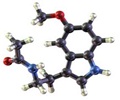Researchers have identified a protein that explains the biological co-ordination between body’s 24-hour, or circadian schedule, and metabolism.
Researchers have identified a protein that explains the biological co-ordination between body’s 24-hour, or circadian schedule, and metabolism.
It’s well known that the body’s energy levels cycle on a 24-hour, or circadian, schedule, and that this metabolic process is fuelled by oxygen. Now, researchers at the University of Pennsylvania School of Medicine have found that a protein called Rev-erb coordinates the daily cycles of oxygen-carrying heme molecules to maintain the body’s correct metabolism.Many studies, including this one, point to a link between the human internal clock and such metabolic disorders as obesity and diabetes. Proteins such as Rev-erb are the gears of the clock and understanding their role is important for fighting these diseases, the researchers said.
“This is the next chapter on Rev-erb, a member of a family of cell-nucleus proteins that includes receptors for anti-diabetic drugs,” explains senior author Mitchell A. Lazar, MD, PhD, Director of the Institute for Diabetes, Obesity, and Metabolism at Penn.
About two years ago Lazar’s group discovered that Rev-erb was a critical component of the circadian clock. In this paper, they found that the activity of Rev-erb is controlled by heme.
Heme represents the body's most important way of transporting and using oxygen, which would simply bubble away in the body without being bound to heme.
“In a molecular baton hand-off, oxygen is transferred from heme in the bloodstream to the heme molecules found inside a cell,” says Lazar, of how oxygen reaches cells to run their metabolic needs.
Advertisement
The findings further tie together the 24-hour cycle of the body with metabolic function.
Advertisement
He added that the newly discovered circadian/metabolic link could be the focus of a new generation of diabetes treatments.
The Penn group worked with scientists at GlaxoSmithKline, who demonstrated that the Rev-erb protein can physically bind to heme in the test tube. They found that heme, by regulating the activity of Rev-erb, reduces the amount of glucose produced by liver cells.
“What’s exciting about this is that it puts heme in a central role in the metabolic regulation of the cell. Not only is it a key component in making energy, but also in the pathway for turning off glucose production.” Excessive glucose production by the liver is a major cause of high blood sugar in diabetes,” Lazar said.
The study is published in Science Express in advance of print publication in Science.
Source-ANI
SRM/S











